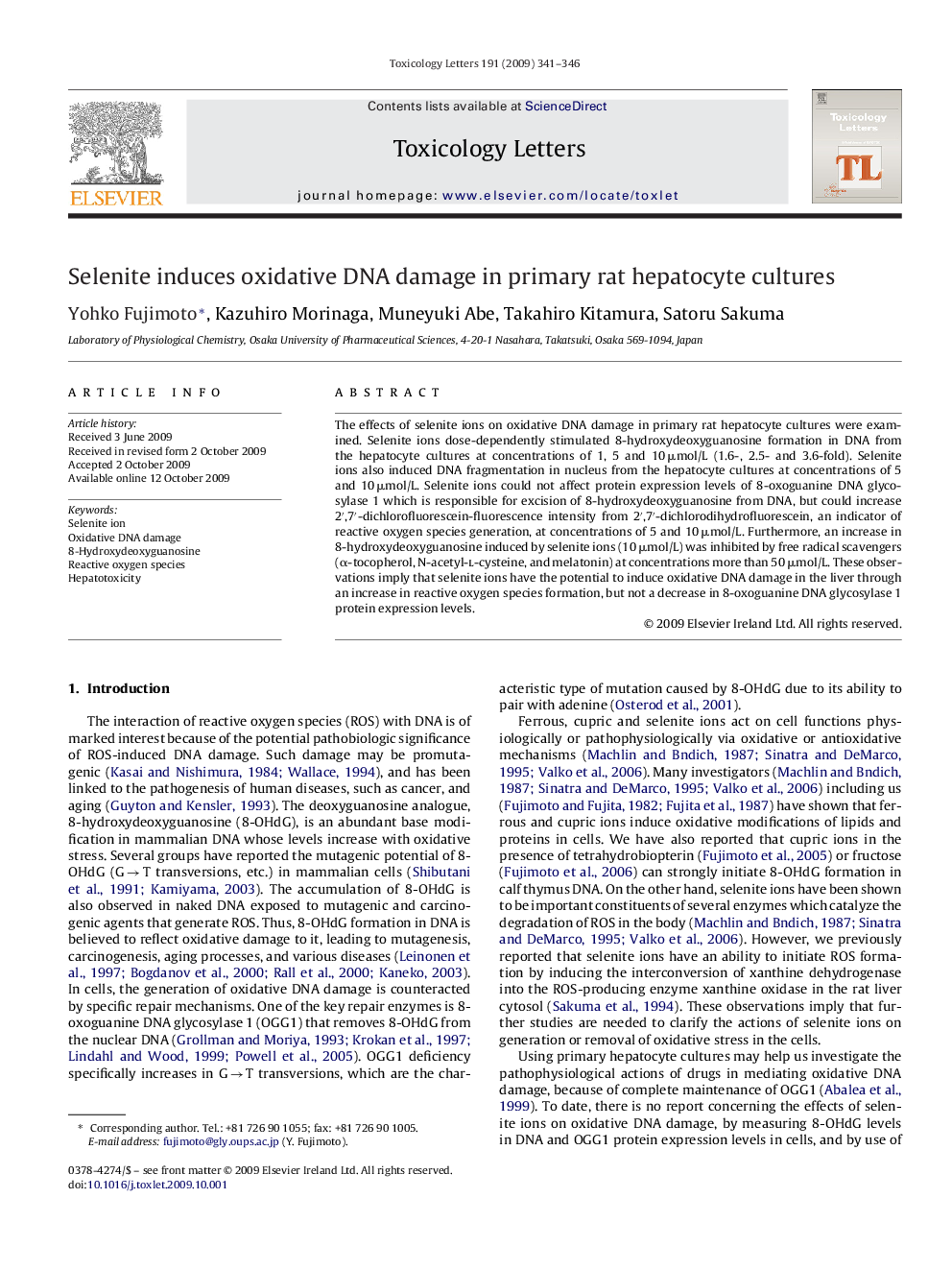| Article ID | Journal | Published Year | Pages | File Type |
|---|---|---|---|---|
| 5860938 | Toxicology Letters | 2009 | 6 Pages |
The effects of selenite ions on oxidative DNA damage in primary rat hepatocyte cultures were examined. Selenite ions dose-dependently stimulated 8-hydroxydeoxyguanosine formation in DNA from the hepatocyte cultures at concentrations of 1, 5 and 10 μmol/L (1.6-, 2.5- and 3.6-fold). Selenite ions also induced DNA fragmentation in nucleus from the hepatocyte cultures at concentrations of 5 and 10 μmol/L. Selenite ions could not affect protein expression levels of 8-oxoguanine DNA glycosylase 1 which is responsible for excision of 8-hydroxydeoxyguanosine from DNA, but could increase 2â²,7â²-dichlorofluorescein-fluorescence intensity from 2â²,7â²-dichlorodihydrofluorescein, an indicator of reactive oxygen species generation, at concentrations of 5 and 10 μmol/L. Furthermore, an increase in 8-hydroxydeoxyguanosine induced by selenite ions (10 μmol/L) was inhibited by free radical scavengers (α-tocopherol, N-acetyl-l-cysteine, and melatonin) at concentrations more than 50 μmol/L. These observations imply that selenite ions have the potential to induce oxidative DNA damage in the liver through an increase in reactive oxygen species formation, but not a decrease in 8-oxoguanine DNA glycosylase 1 protein expression levels.
